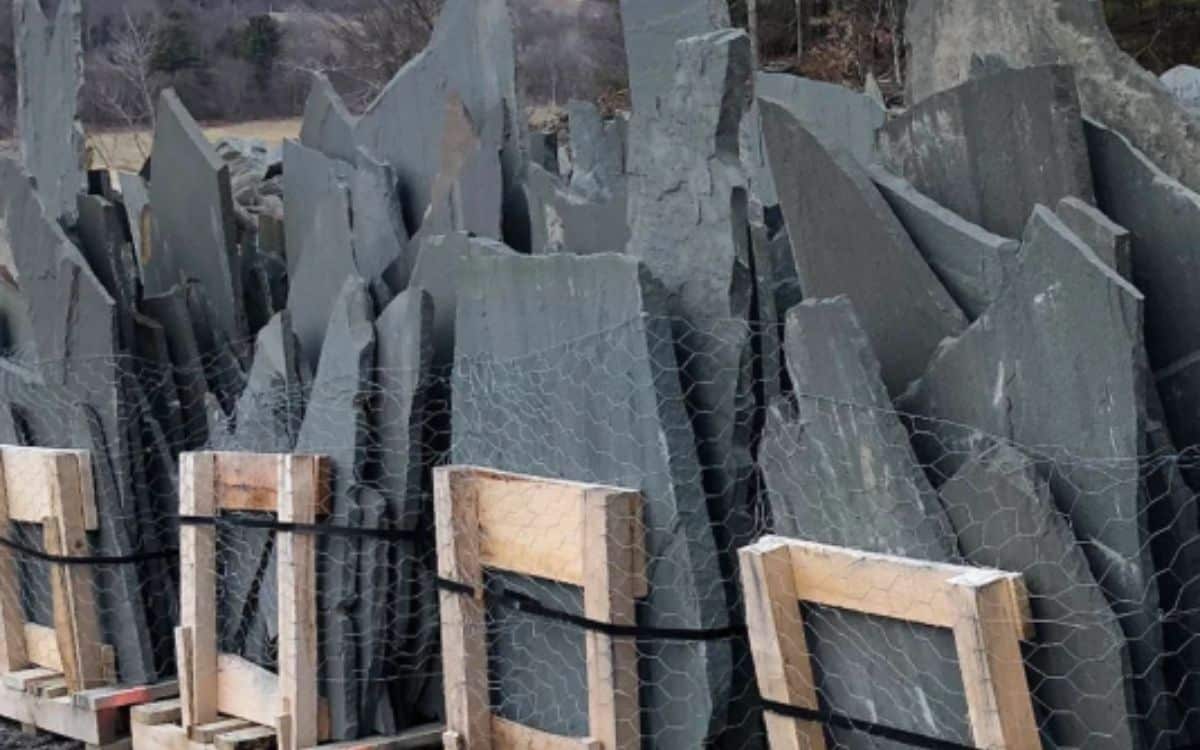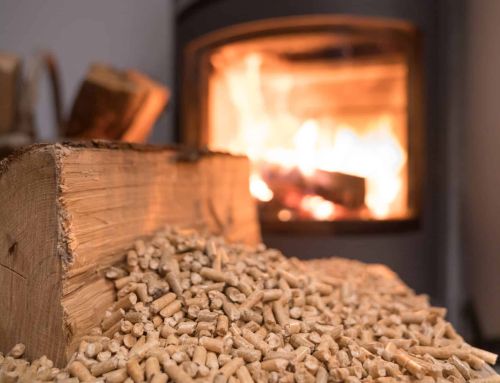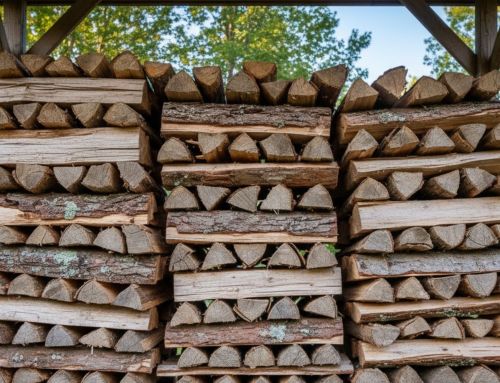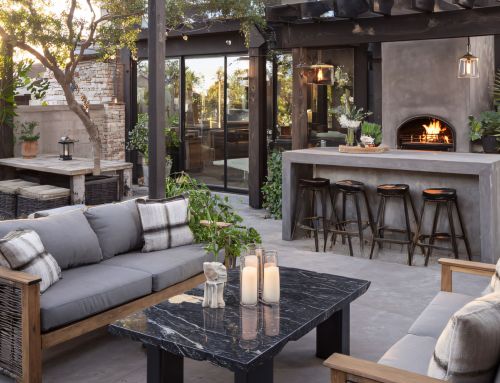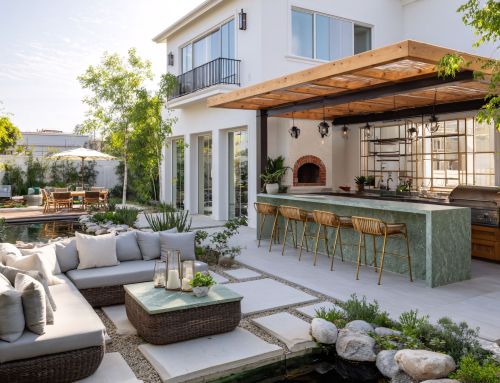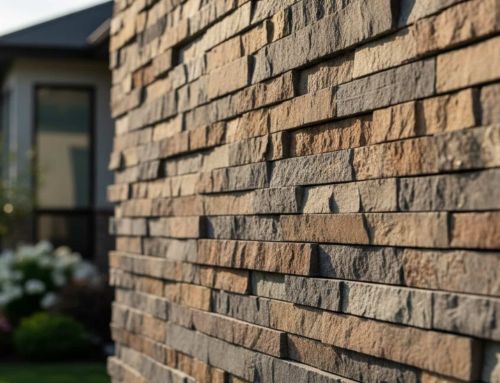Picture walking across a stunning patio that seamlessly blends natural beauty with lasting durability. That is the magic of flagstones. These stones have helped transform countless backyards, garden paths, and outdoor spaces into breathtaking landscapes built to last.
Whether planning a new patio, adding stepping stones to a garden, or designing elegant walkways, understanding the world of flagstones is the first step toward making an informed decision. From the rough texture of weathered sandstone to the polished elegance of quartzite, flagstones offer a wide variety of colors, shapes, and thicknesses to suit any style or project.
What is Flagstone?
Flagstone is one of the most practical natural materials for landscaping and construction. Formed through geological processes over millions of years, these flat, layered stones split naturally along sedimentary lines, making them ideal for patios, walkways, and retaining walls. The term “flagstone” doesn’t refer to one specific type of rock but rather any stone that can be easily split into thin, flat pieces.
One of flagstone’s biggest advantages is its natural variety. Different regions produce stones with distinct colors, textures, and finishes, ranging from smooth and polished to rough and rustic. This diversity allows for creative, durable designs that suit a wide range of outdoor styles and environments.
Popular Flagstone Types
Slate
Slate is a versatile metamorphic stone best suited for wall cladding, artistic features, and moderate-traffic areas. Its smooth, slip-resistant surface and ease of cutting make it a popular choice for decorative use. However, since slate can absorb water, sealing is recommended in regions prone to freeze-thaw cycles to prevent damage.
Sandstone
Sandstone is an affordable sedimentary stone best for patios, pool areas, and walkways. It stays cool underfoot in hot weather, making it ideal for barefoot use. Due to its porous nature, proper drainage is important to prevent water absorption and potential damage.
Quartzite
Quartzite is ideal for high-traffic areas and driveways due to its extreme durability, natural slip resistance, and ability to withstand harsh climates. While it’s weather-resistant and long-lasting, the stone’s hardness makes it difficult to cut, often requiring professional installation.
Limestone
Limestone is best for formal landscapes and humid climates, offering a refined appearance and natural weather resistance. Though durable, it can be affected by acidic substances and its heavy weight may increase installation costs.
Bluestone
Bluestone is best for traditional New England designs, offering strong regional appeal and excellent durability. This dense sandstone features a rough texture for good traction and withstands harsh winters well. Sealing is recommended to preserve its color and protect against staining.d holds up well to harsh winters. The stone requires sealing to maintain color and resist staining.
Travertine
Travertine is best for pool areas and luxury installations, offering a naturally cool surface and a textured, weathered look with distinctive surface pits. While it’s durable and upscale, the porous texture can make maintenance more demanding.
How to Choose the Right Flagstone
Consider Your Climate
In Massachusetts, harsh winters are a constant challenge. Dense stones like quartzite or bluestone handle freeze-thaw cycles better than porous options like sandstone. Their durability helps prevent cracking and shifting, making them a reliable choice for long-lasting outdoor surfaces.
Match Your Style
Based on our experience with hundreds of projects:
- Traditional homes: Irregular shapes with earthy colors like brown, tan, and rust blend seamlessly with classic architecture and natural surroundings, creating a timeless, welcoming look.
- Contemporary designs: Cut edges with uniform colors such as gray, charcoal, or blue provide clean lines and a sleek, modern aesthetic that complements minimalist outdoor spaces.
- Rustic landscapes: Natural weathered textures and irregular flagstones enhance the organic feel of rural or woodland settings, adding charm and character to garden paths and patios.
- Formal gardens: Smooth, polished surfaces in soft neutrals or light tones offer a refined, elegant appearance ideal for structured landscapes and symmetrical layouts.
Budget Planning
Material costs are just the beginning. It’s important to also factor in installation fees (typically $10–$15 per square foot for professionals), site preparation and base materials, tools and equipment for DIY projects, and ongoing maintenance supplies.
Size and Shape Considerations
- Small pieces (12″-18″): Better for curves and intricate patterns
- Large pieces (18″-36″): Faster installation, contemporary look
- Natural edges: Organic, rustic appearance
- Cut edges: Clean, modern lines
Installation Recommendations
Professional vs. DIY
Professional installation is best for projects involving heavy stones like limestone, large surface areas, complex drainage needs, or when warranty coverage matters. Skilled installers can ensure proper leveling, alignment, and long-term durability.
DIY is a great option for smaller projects like garden paths, simple patios, or when using lighter stones such as sandstone. Basic rectangular patterns are easier to handle and require minimal tools, making them manageable for most homeowners.
Foundation Requirements
A proper foundation typically includes:
- Excavation: 6-8 inches deep for most applications
- Base layer: 4-6 inches of compacted gravel
- Sand layer: 1-2 inches for leveling
- Drainage: Proper slope and water management
Joint Options
- Sand joints: Natural look, allows for slight movement
- Polymeric sand: Weed prevention, more stable
- Mortar joints: Permanent installation, formal appearance
- Laid dry: Natural gaps for plant growth
Maintenance and Care
Regular Maintenance
- Cleaning: Sweep regularly to remove dirt, leaves, and debris that can cause staining or surface wear. Pressure wash two to three times per year using a fan-tip nozzle and stone-safe detergent to maintain a fresh appearance without damaging the surface.
- Weed control: Apply polymeric sand between joints to harden gaps and prevent weed growth. For existing weeds, use a safe herbicide or manually remove them to keep pathways clear and attractive.
- Stain removal: Address spills quickly to prevent deep staining, especially from oil, rust, or organic matter like berries. Use pH-neutral or stone-specific cleaners, and avoid harsh chemicals that could damage the surface.
Sealing Requirements
Most flagstones benefit from sealing every 2–5 years. Dense stones like quartzite may not need sealing, while porous varieties like sandstone typically require it. Sealing helps protect against stains, moisture damage, and color fading, especially in high-traffic or weather-exposed areas. Regular sealing also makes cleaning and maintenance easier over time.
Seasonal Care
- Winter: Promptly remove ice and snow to prevent moisture damage, especially in freeze-thaw climates. Avoid using salt or harsh deicers on natural stones like limestone, as they can cause surface erosion or discoloration.
- Summer: Perform a deep clean using a stone-safe cleaner and a stiff brush to remove dirt, algae, or mildew. It’s also a good time to inspect for cracks, shifting stones, or other damage that may need repair.
- Spring/Fall: These seasons offer mild temperatures and low moisture, making them ideal for sealing flagstone and performing major maintenance tasks like leveling or resetting loose pieces. Regular upkeep during these times helps extend the lifespan and appearance of the stone.
Popular Applications
Patios and Outdoor Living
Flagstones create beautiful outdoor spaces that naturally incorporate into landscaping. Choose stones that complement your house style and provide adequate space for furniture and traffic flow. Smooth, durable stones like bluestone or slate work well for these areas. Add features like fire pits or built-in seating to enhance functionality.
Walkways and Garden Paths
Stepping stones and continuous walkways guide visitors through your yard while adding visual interest. Consider slip-resistant varieties for safety. Irregular shapes can create a rustic, natural look, while uniform cuts offer a more polished design. Proper spacing and base preparation help prevent shifting and weeds.
Pool Areas
Select stones that stay cool and handle water exposure well. Travertine and limestone are excellent choices that won’t become slippery when wet. These stones also enhance the luxurious feel of a poolside retreat. Be sure to seal surfaces regularly to resist chlorine and moisture damage.
Retaining Walls
Thicker flagstones can be used for low retaining walls and garden borders. Ensure proper installation for structural integrity. Dry-stacking or using mortar depends on the height and load of the wall. These walls also help control erosion and define planting areas.
Conclusion
Flagstones bring together timeless beauty and practical performance, making them a top choice for patios, walkways, pool areas, and more. With so many types, textures, and finishes available, it’s easy to find a stone that fits your style, climate, and budget. From proper installation to regular care, understanding these details ensures your flagstone project stays beautiful and durable for decades.
At Old Station Outdoor & Landscape Supply, we’ve helped countless homeowners and contractors choose the right flagstone for their unique needs. Whether you’re planning a simple garden path or a full-scale outdoor living area, we’re here to guide you every step of the way. Visit our showroom in Norton, MA, or contact us today to get expert advice, see our wide selection, and find the perfect stone for your project.
FAQs
Why are they called flagstones?
The name comes from the Middle English word “flagge,” meaning turf, which likely originated from the Old Norse word “flaga,” meaning chip or slab, perfectly describing these flat stone pieces used for outdoor flooring applications.
How does flagstone form?
Flagstones form through geological processes where sedimentary rocks like sandstone develop in layers over millions of years, or when existing rocks undergo metamorphic transformation under heat and pressure, creating natural splitting lines that provide easy access to flat segments.
Are there different kinds of flagstones?
Yes, there are many different types, including slate, sandstone, quartzite, bluestone, travertine, and basalt, each offering different colors ranging from subtle grays and beiges to vibrant reds, blues, and greens depending on their geological formation.
Is flagstone a natural stone?
Yes, flagstone is 100% natural stone that’s quarried directly from the earth with minimal processing, including popular varieties like limestone that maintain all their natural beauty and unique characteristics formed by geological processes over millions of years.

